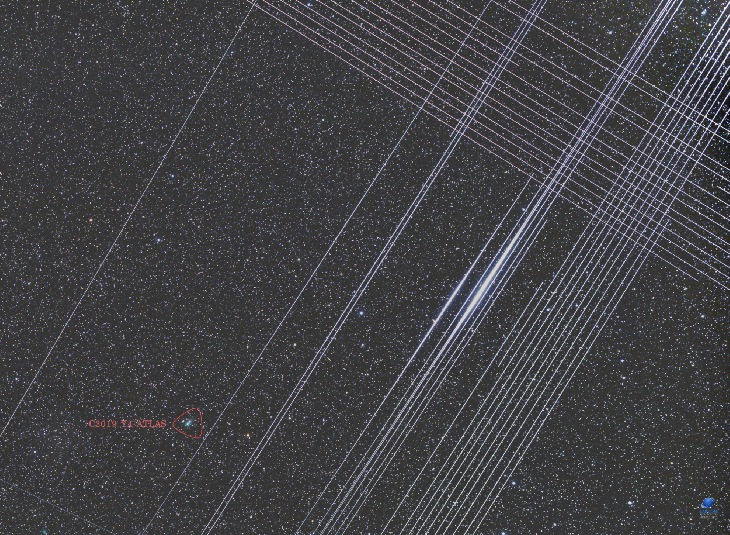The Hubble Space Telescope operated by NASA and the European Space Agency recently captured new photos of the approaching comet ATLAS. The images show the comet as it breaks apart into multiple fragments.
The comet, officially known as C/2019, was discovered last year using the Asteroid Terrestrial-impact Last Alert System (ATLAS) in Hawaii. Follow-up observations on the comet revealed that it was fragmenting.
COMET ATLAS' Discovery

When ATLAS was first discovered, astronomers estimated the atmospheric cloud surrounding it was about 720,000 kilometres wide. Due to its massive, the astronomers initially stated that it was big and bright enough to be spotted from Earth with the human eye.
Through their observations, astronomers learned that the comet would reach its closest distance to Earth on May 23. They estimated that the comet would fly past Earth from a distance of 73 million miles away.
Fragmentation Of Comet ATLAS

However, based on ATLAS' current status, there's a chance that the comet might not be able to make its near-Earth approach as an intact space object. According to recent observations, ATLAS has started to break apart.
The latest images captured by Hubble on April 20 and April 30 show the multiple fragments from the comet. According to NASA, the space telescope was able to photograph about 30 comet fragments on April 20. Then, on April 23, Hubble spotted about 25 pieces. Some of these comet fragments are about as big as a standard house.
Studying ATLAS' Fragments
David Jewitt, a professor of planetary science and astronomy at the University of California, Los Angeles, noted that the varying number of fragments could be caused by a number of factors. "Their appearance changes substantially between the two days, so much so that it's quite difficult to connect the dots," he said in a statement. "I don't know whether this is because the individual pieces are flashing on and off as they reflect sunlight, acting like twinkling lights on a Christmas tree, or because different fragments appear on different days."
NASA noted that Hubble's latest photos could shed light on the reason behind comet ATLAS' fragmentation. Through the clear photos, astronomers could observe the comet's nucleus and how it is reacting to its surroundings.









